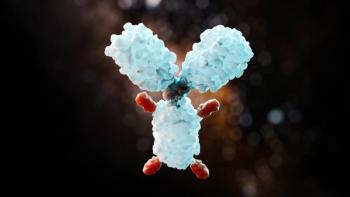
Trial Finds No Meaningful Change in Left Ventricular Mass Index With Empagliflozin in Patients Without Diabetes
However, findings do not preclude the possibility that mechanisms other than cardiac remodeling may be responsible for benefits of SGLT2 inhibition.
Final results from the EMPA-HEART 2 CardioLink-7 trial presented at the American Heart Association 2022 Scientific Sessions have found no statistically significant change in left ventricular mass index among patients without diabetes receiving empagliflozin. The findings are in contrast to results of the EMPA-HEART 1 trial presented in 2019.
Sodium-glucose cotransporter-2 (SGLT2) inhibitors prevent incident heart failure in individuals with diabetes and atherosclerotic cardiovascular disease or cardiovascular risk factors, according to presenter Subodh Verma, MD, PhD. SGLT2 inhibitors also attenuate heart failure events in patients with heart failure with reduced ejection fraction (HFrEF), heart failure with mid-range ejection fraction (HFmrEF), and heart failure with preserved ejection fraction (HFpEF) independent of glycemic status.
“These observations have formed the basis of strong recommendations to use SGLT2 inhibitors in people with type 2 diabetes and in those with prevalent heart failure,” Verma said.
Additionally, Verma noted that the broad benefits observed with SGLT2 inhibitors have led to experts theorizing that these treatments may have additional benefits when introduced earlier in the natural history of heart failure among individuals who do not have diabetes or prevalent heart failure, but who are at risk of developing heart failure. Importantly, however, Verma said there are no clinical trials evaluating this question.
Some translational randomized clinical trials have provided corroboratory mechanistic data on left ventricular remodeling with SGLT2 inhibitors. Additionally, a reduction in indexed left ventricular mass has been observed in patients with type 2 diabetes and coronary artery disease and favorable changes in left ventricular and left atrial remodeling indices have been reported in patients with heart failure regardless of diabetes status.
To investigate the questions surrounding the use of SGLT2 inhibitors in cardiac remodeling, investigators led a multi-center, double-blind, placebo-controlled randomized trial. Participants were between 40 and 80 years of age and were randomized to receive either empagliflozin or placebo for 6 months.
In the trial, 318 subjects were assessed for eligibility, 169 were randomized, and sufficient data were available for 78 patients in the placebo arm and 75 patients in the empagliflozin arm. Of those, 86% were men with a mean age of 59 years. The majority had a history of hypertension and one-quarter had a history of myocardial infarction.
The primary outcome was 6-month change in left ventricular mass index and secondary cardiac outcomes were 6-month between-groups change in left ventricular end-diastolic volume index, left ventricular end-systolic volume index, and left ventricular ejection fraction.
When examining the primary result, the investigators found that baseline left ventricular mass index was approximately 63 g/m2 in both groups. The mean change in the placebo group was 1.07 g/m2 and the mean change in the empagliflozin group was 1.20 g/m2.
The adjusted treatment effect for both groups was 0.30 g/m2, which was not statistically significant. The change in left ventricular end-diastolic volume was also not statistically significant and there was no covariate treatment interaction with respect to the primary outcome.
Based on these findings, Verma said that in individuals without diabetes or significant heart failure, 6-month treatment with empagliflozin versus placebo did not result in any meaningful change in left ventricular mass index or in the secondary left ventricular volume or ejection fraction indices between groups.
Notably, these data contrast the favorable left ventricular remodeling results reported in patients with type 2 diabetes and coronary artery disease and in patients with prevalent heart failure over a similar duration. When putting the results of the EMPA-HEART 1 and EMPA-HEART 2 trials together, Verma said the data demonstrate that cumulatively, there is a numeric but modest 1.3 g/m2 reduction in left ventricular mass over 6 months with empagliflozin across the broad population.
However, there is consistent improvement in ejection fraction by approximately 2% observed in both trials. This is actually statistically significant when combining the 2 trials. Taken together, the findings do not preclude the possibility that mechanisms other than cardiac remodeling may be responsible for some of the benefits of SGLT2 inhibitors.
REFERENCE
Verma S. Empaglifozin and Cardiac Remodeling in People Without Diabetes. Presented at: American Heart Association 2022 Scientific Sessions. November 6, 2022.
Newsletter
Stay informed on drug updates, treatment guidelines, and pharmacy practice trends—subscribe to Pharmacy Times for weekly clinical insights.
















































































































































































































